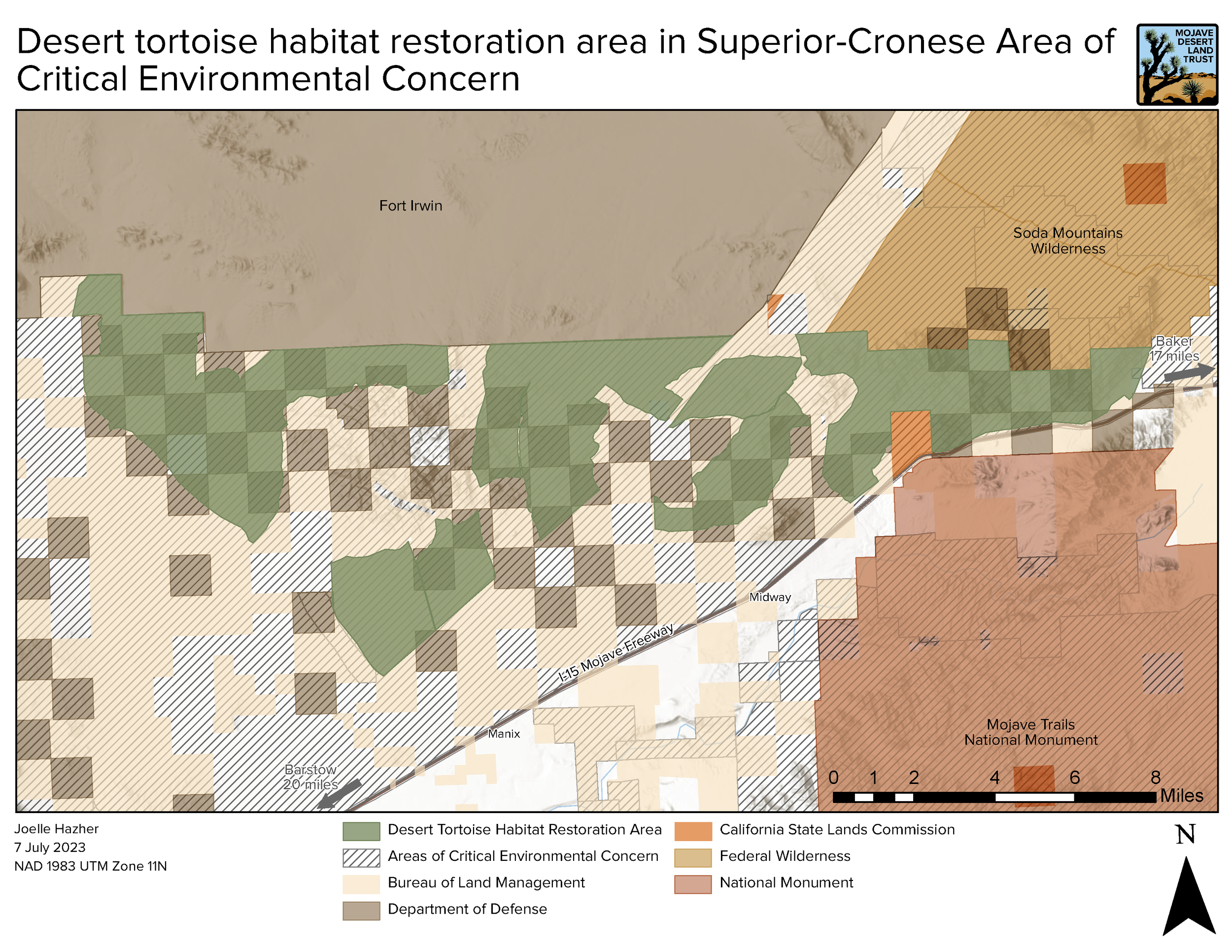Targeted conservation for the desert tortoise
Photo: Kayla Thompson
By Kelly Herbinson, MDLT Executive Director
Humans have paid homage to tortoises and turtles as far back as we have recorded history. Many cultures have held beliefs that the world rests on a turtle’s back. If you’ve seen a desert tortoise, you can see why. We often speak of them as ambassadors, icons, or keystone species, but none of those terms capture the degree to which tortoises resemble wizards. I remember the first time I saw one as a field biologist in Barstow. A tortoise plodded out of a burrow and swung her head to match an eye with mine. It was one of the more magical experiences of my life and led me to dedicate the next few decades to working with them.
Turtles and tortoises are the second most imperiled group of vertebrates on the planet, second only to nonhuman primates. Despite their hard shells, they’re fragile and often sensitive to environmental change. The Mojave Desert tortoise (Gopherus agassizii) is no exception. Our tortoise lives throughout the California and Nevada Deserts, and into Arizona and Utah, but severe habitat loss and degradation, over-predation by ravens and coyotes, vehicle strikes, disease, and drought have caused severe population decline. The species was listed as Threatened under the Endangered Species Act in 1990 and uplisted to Endangered by the California Fish and Game Commission in April 2024. Recent data show their status has not been improving. Desert tortoise population density and abundance declined by 38% in just the last 20 years. This continued decline prompted a review of the species’ status.
What do we do now?
When a species is listed under the Endangered Species Act, its most critical habitat is identified for increased protection. For the desert tortoise, much of that habitat is on federally owned and managed land. The significance of the continued decline prompted an interagency collaboration between the Bureau of Land Management, the Department of Defense, the US Fish and Wildlife Service, and the National Fish and Wildlife Foundation known as the Desert Tortoise Recovery and Sustainment Partnership (RASP). The RASP is designed to coordinate a bolder strategy for increased, targeted conservation activities with the goal of ultimately recovering the desert tortoise.
Recent tortoise scat was discovered on one of the parcels within the focal areas.
The MDLT was honored to be chosen as one of the largest grant recipients in the programs’ inaugural year, receiving more than $1 million to restore and protect critical desert tortoise habitat northeast of Barstow over the next three years. In 2023, the first year of the grant, MDLT staff traveled to this remote region for initial ground assessments of tortoise activity and established restoration plans for the focal areas. Recent tortoise scat was discovered during these field assessments—a promising sign! Our three-year goal is to carry out the interagency strategy of establishing large, intact expanses of habitat by clearly delineating and signing legal travel routes in the area, and halting and restoring unauthorized cross-country off-highway vehicle activity and route proliferation that has occurred in this region for several years.
The resulting intact habitat, free from unauthorized vehicle impacts, will support recovery of the desert tortoise populations that historically thrived in this region. Eventually, visitors to these public lands will benefit from clear route signage and confidence that their recreational activities follow the Bureau of Land Management’s land management plans.
We are grateful to the National Fish and Wildlife Foundation for the generous funding as we continue working with our agency and NGO partners in creating innovative solutions to the complex conservation challenges our California desert wildlife continue to face.
This article was updated on April 18, 2024.
How can I help?
We are thrilled to have generous grant funding to support this work, however it doesn’t cover all our costs. Donations from members and donors like you provide crucial operating resources that enable us to undertake important conservation programs like this one. If you are interested in strategic conservation of the Mojave Desert tortoise, please consider donating today. We’re just getting started and we need your help.




